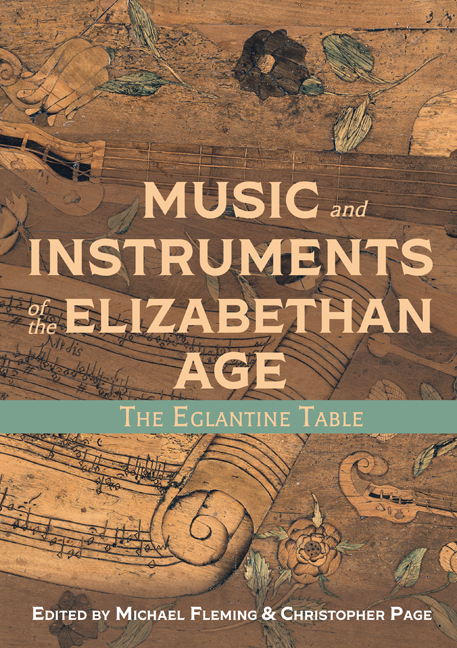Book contents
- Frontmatter
- Dedication
- Contents
- List of Illustrations
- Foreword
- Acknowledgements
- Note to the Reader
- List of Abbreviations
- Introducing the Eglantine Table
- Part I Silent Things
- Part II Music and Instruments
- Part III Broader Views of the Eglantine Table
- Appendices
- Glossary
- Bibliography
- List of Contributors
- Index
- Plate section
2 - Botany, the Table and Hardwick New Hall
Published online by Cambridge University Press: 24 March 2021
- Frontmatter
- Dedication
- Contents
- List of Illustrations
- Foreword
- Acknowledgements
- Note to the Reader
- List of Abbreviations
- Introducing the Eglantine Table
- Part I Silent Things
- Part II Music and Instruments
- Part III Broader Views of the Eglantine Table
- Appendices
- Glossary
- Bibliography
- List of Contributors
- Index
- Plate section
Summary
A unique record of dynastic alliance, elite pastimes and artisanal craft, the Eglantine Table is also one element in a coherent domestic interior where many details are designed to speak to one another and to the viewer of festive events and entertainments through musical instruments, games and flowers. In contrast to some other chapters in this book, this one places the Eglantine Table in the context of the 1590s, several decades after it was made, when Hardwick New Hall was being built. It is generally acknowledged that the High Great Chamber, where the Table now resides, was laid out to receive, and was specifically decorated to honour, Elizabeth of Shrewsbury's royal namesake, Elizabeth I. When the queen was housed by some great magnate of the realm, just as on her royal progresses through towns and cities, she was greeted, at gates, on towers and in gardens, by songs and instruments whose variety and effect the chroniclers of such events rarely fail to notice. The ‘six severall instruments’ that played in 1575, when the Earl of Leicester entertained her at Kenilworth, provide one of many examples. In this chapter, I propose that the dense musical imagery of the Table, conceived in relation to marital festivities of the late 1560s, made it the perfect complement to a state room, the High Great Chamber, created in the 1590s in the hope that the queen would visit and take her place beneath the state canopy, the earliest certain location for the Table on record. I make this argument in relation to the lavish representations of flowers on its surface, both those to be found in nature and those encountered only in heraldry. This aspect of the Table's decoration has generally been overlooked, and yet the potential importance of its botany, both real and imaginary, is clear from the very name of the Eglantine Table, now universally used in response to an open invitation at the heart of the decoration, where the briar rose is exalted ‘to the divine’.
The coherence of Hardwick New Hall has never been overlooked by commentators; the efficiency of the Hall's commission, construction and completion in just nine years indicates a tightly organised project, carefully imagined and overseen by Bess, the dowager Countess of Shrewsbury, in concert with her distinguished architect, Robert Smythson.
- Type
- Chapter
- Information
- Music and Instruments of the Elizabethan AgeThe Eglantine Table, pp. 35 - 46Publisher: Boydell & BrewerPrint publication year: 2021



